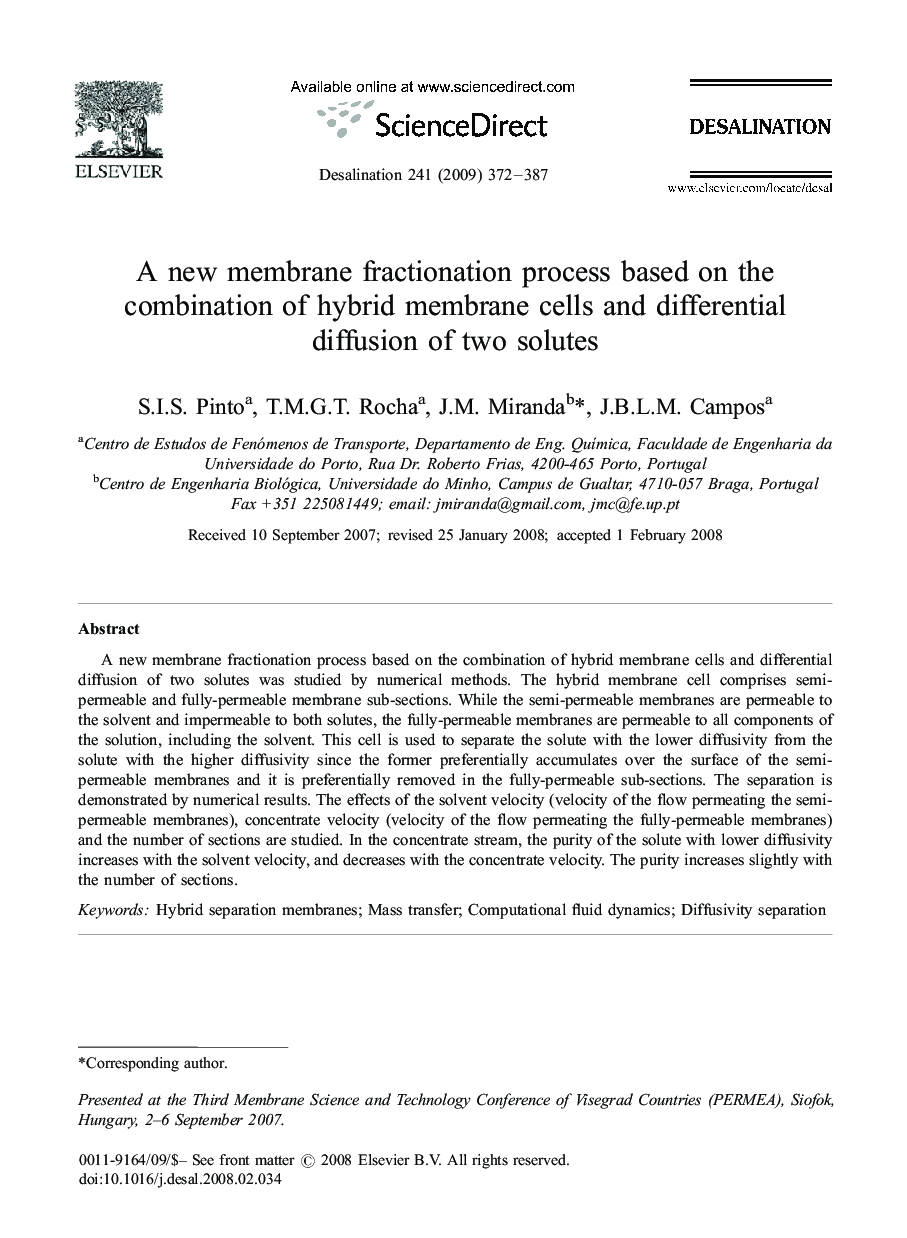| Article ID | Journal | Published Year | Pages | File Type |
|---|---|---|---|---|
| 626628 | Desalination | 2009 | 16 Pages |
A new membrane fractionation process based on the combination of hybrid membrane cells and differential diffusion of two solutes was studied by numerical methods. The hybrid membrane cell comprises semipermeable and fully-permeable membrane sub-sections. While the semi-permeable membranes are permeable to the solvent and impermeable to both solutes, the fully-permeable membranes are permeable to all components of the solution, including the solvent. This cell is used to separate the solute with the lower diffusivity from the solute with the higher diffusivity since the former preferentially accumulates over the surface of the semipermeable membranes and it is preferentially removed in the fully-permeable sub-sections. The separation is demonstrated by numerical results. The effects of the solvent velocity (velocity of the flow permeating the semipermeable membranes), concentrate velocity (velocity of the flow permeating the fully-permeable membranes) and the number of sections are studied. In the concentrate stream, the purity of the solute with lower diffusivity increases with the solvent velocity, and decreases with the concentrate velocity. The purity increases slightly with the number of sections.
